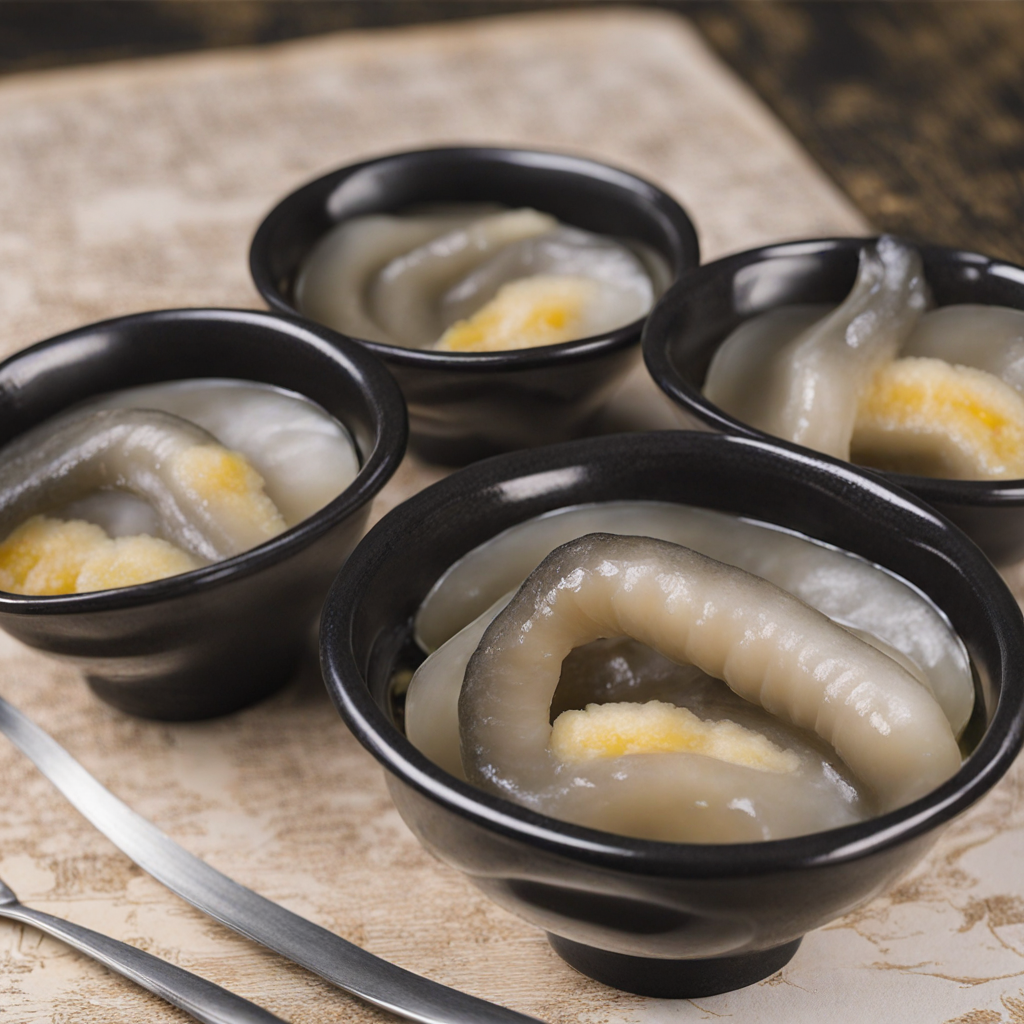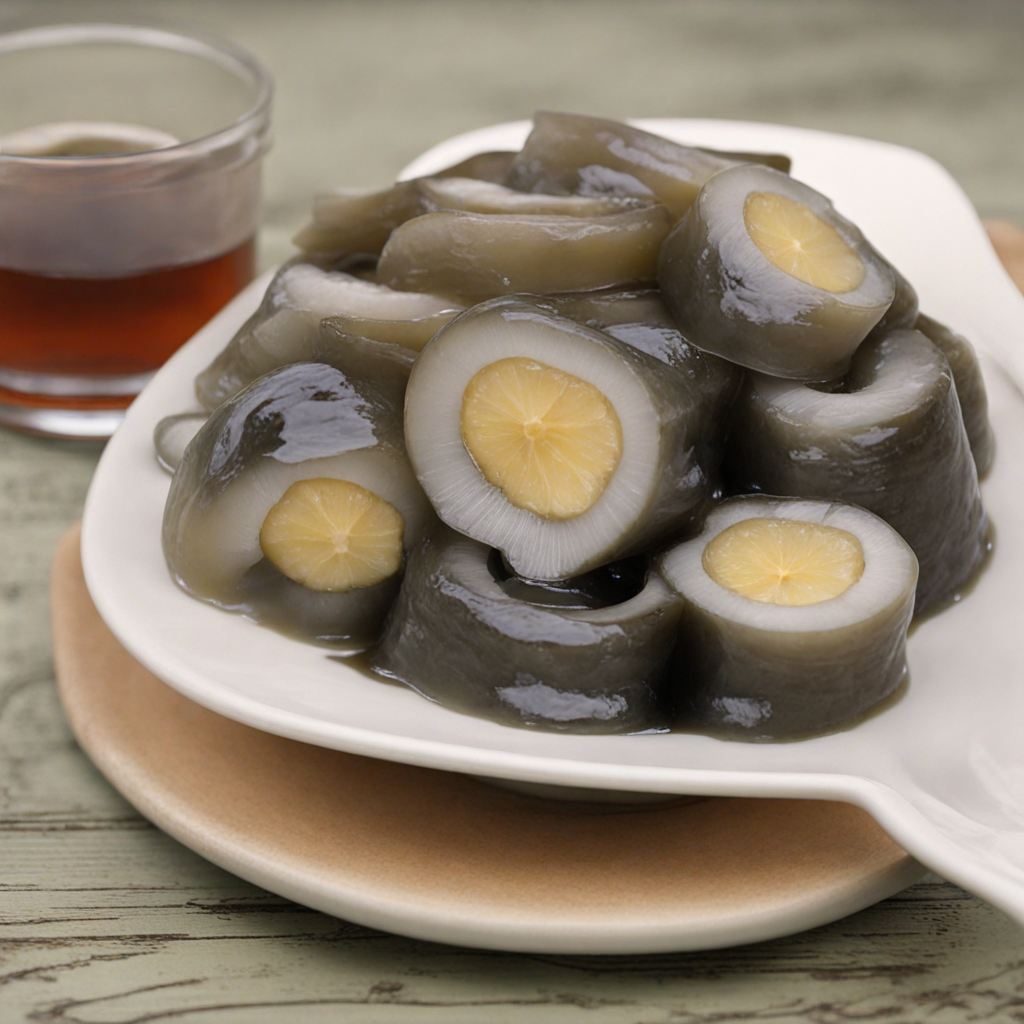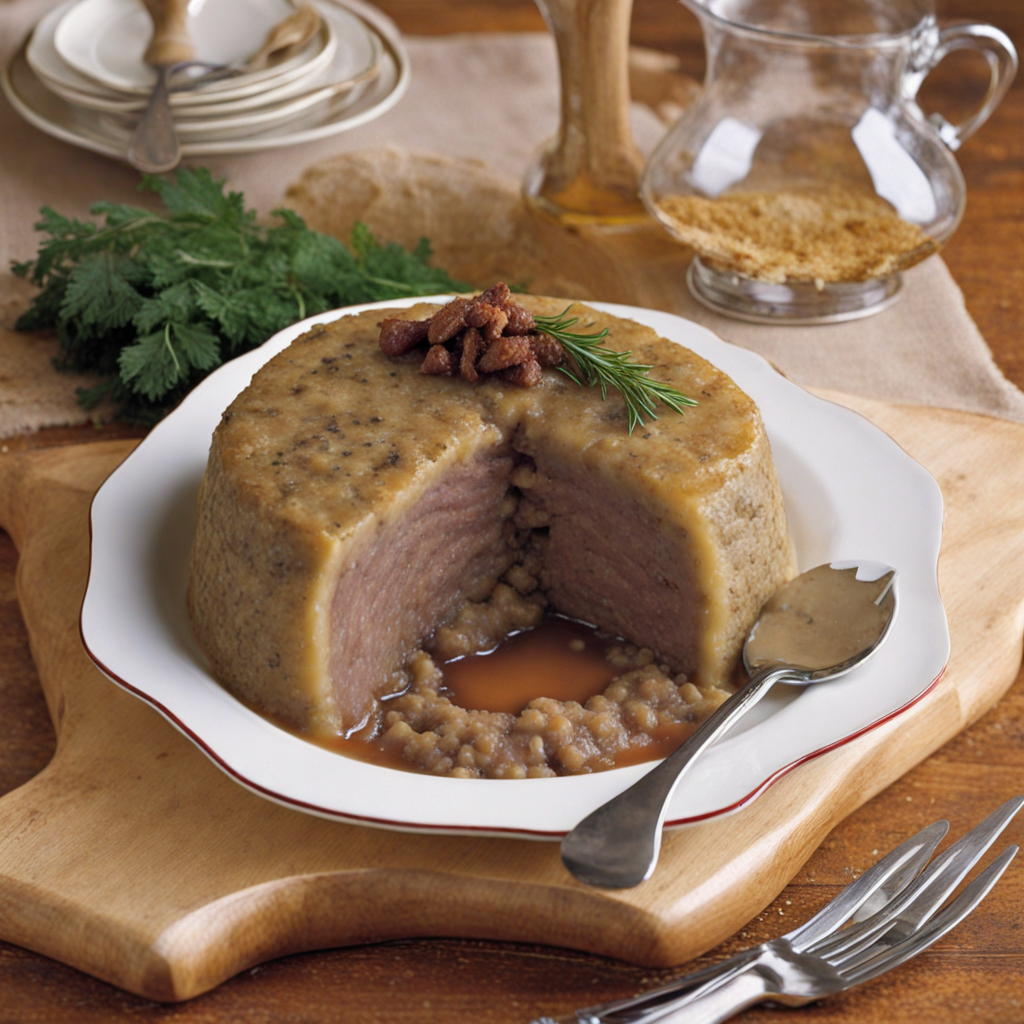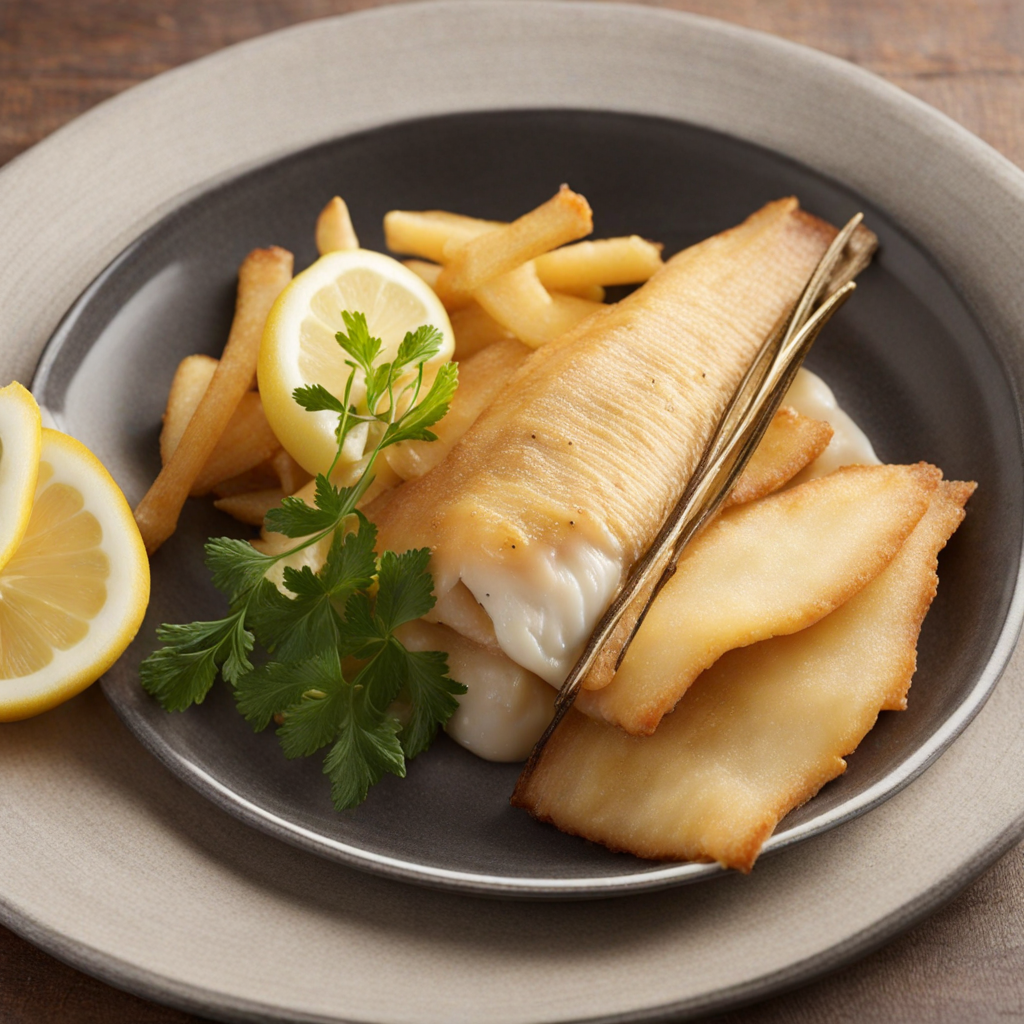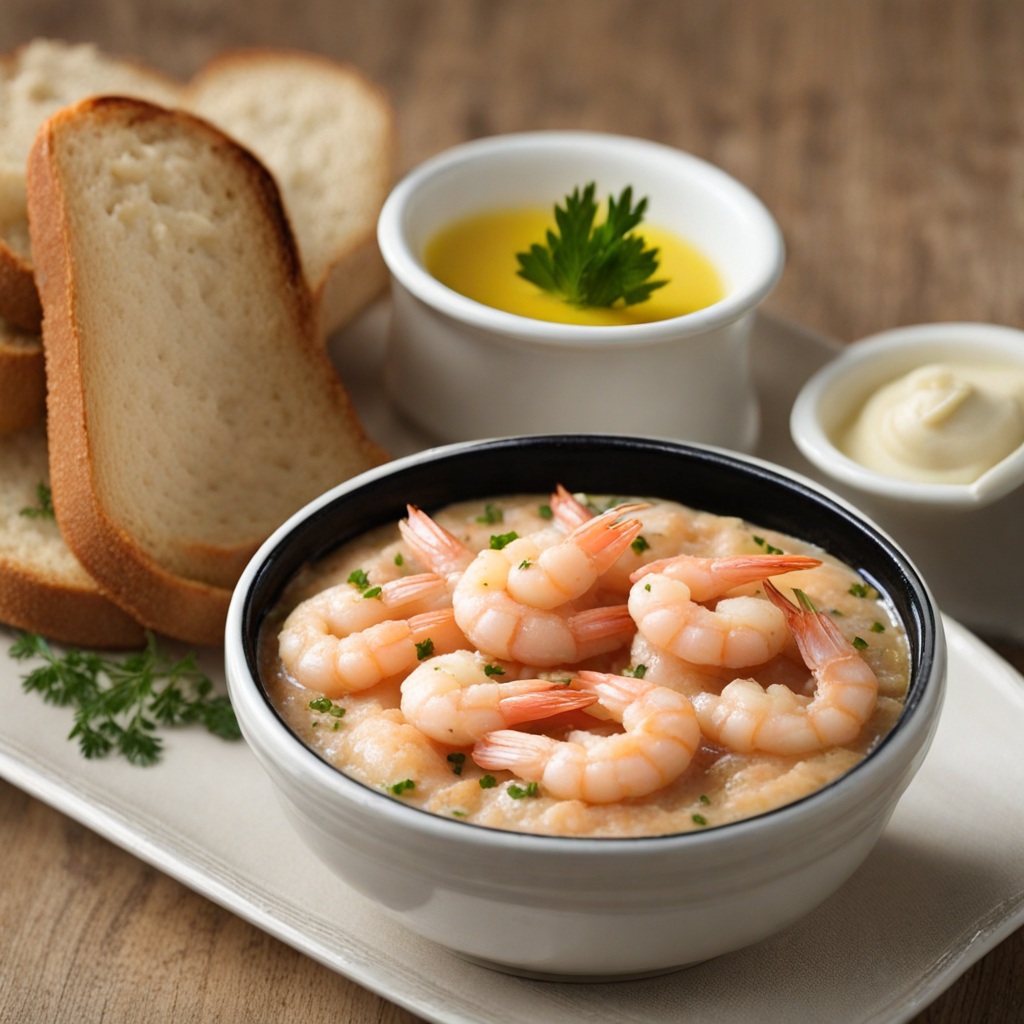Jellied Eels
Jellied eels are a traditional dish originating from the East End of London, steeped in history and character. This unique delicacy consists of freshly caught eels that are boiled and then set in a savory jelly made from their natural gelatin. The preparation starts with the eels being cleaned and cut into pieces, often seasoned with a hint of vinegar and a mix of spices, which adds a tangy depth to the dish. The resulting jellied mixture has a charming wobble, showcasing its gelatinous texture that is both intriguing and appetizing for adventurous eaters. Served cold, jellied eels embody a sense of nostalgia and are often accompanied by crusty bread or mashed potatoes, making for a satisfying meal. The jelly itself has a subtle flavor profile, allowing the natural taste of the eel to shine through. For many locals, jellied eels are more than just food; they evoke memories of bustling markets and traditional shops where this dish has been sold for generations. The experience of enjoying jellied eels often comes with a side of vinegar and pepper, enhancing the flavors and providing a delightful contrast to the rich, smooth jelly. For those willing to explore this iconic British dish, jellied eels offer a taste of the past with a unique texture that is both refreshing and comforting. It's not just a meal; it's a cultural experience that invites you to savor the history and authenticity of London's culinary heritage. Whether enjoyed at a local market or a traditional East End pie and mash shop, jellied eels promise an unforgettable gastronomic adventure that is sure to pique your curiosity and tantalize your taste buds.
How It Became This Dish
The History of Jellied Eels: A Culinary Tradition of the United Kingdom Jellied eels, a dish synonymous with London's East End, are not merely a culinary curiosity; they are a window into the social and cultural history of the region. This dish, which consists of eels boiled in a spiced stock and allowed to cool until they gel, evokes a sense of nostalgia and local pride. To understand the significance of jellied eels, we must delve into their origins, cultural importance, and the evolution of this unique dish over time. #### Origins The roots of jellied eels can be traced back to the 18th century, a time when London was undergoing significant transformation. The Thames River, once teeming with life, served as both a vital waterway and a source of sustenance for the city’s inhabitants. Eels, abundant in the river, became a staple for the working-class population. The dish likely emerged from the necessity of utilizing every part of the catch and making the most out of available resources. The practice of preserving food through gelification is not unique to Britain. Various cultures have employed similar methods for centuries. However, the specific preparation of jellied eels began to flourish in London, particularly in the East End, where impoverished communities relied on inexpensive, readily available food sources. The first documented mention of jellied eels appeared in the late 18th century. Eel sellers would often set up stalls along the riverbanks, selling their wares to passersby. The traditional method of preparation involved boiling the eels, then mixing them with fish stock and a blend of spices, including vinegar, which not only enhanced flavor but also contributed to the preservation of the dish. #### Cultural Significance Jellied eels quickly became emblematic of London’s working-class food culture. The dish was affordable, easy to prepare, and could be eaten cold, making it an ideal meal for those on the move. By the 19th century, jellied eels had cemented their status as a classic East End delicacy, often consumed alongside pie and mash — another staple of London’s culinary repertoire. The dish was particularly popular among local dockworkers and market traders. The eel stalls became social hubs, where people gathered not just to eat but to share stories and news. This communal aspect of eating jellied eels contributed to its cultural significance, creating a sense of identity and community among the working-class populace. In the early 20th century, the rise of the jellied eel shop marked a new chapter in the dish's history. These establishments, often family-run, specialized in serving jellied eels alongside other traditional dishes. The most famous of these shops, such as "M. Manze" and "G. Kelly," became local institutions. The popularity of these shops peaked in the interwar years, when jellied eels were celebrated as a quintessentially London dish. #### Development Over Time As the 20th century progressed, the popularity of jellied eels began to decline. Post-World War II, the culinary landscape of Britain underwent substantial changes, influenced by globalization, increased mobility, and changing tastes. The rise of fast food and the introduction of international cuisines led many to overlook traditional dishes like jellied eels. The East End itself experienced significant demographic shifts, with many traditional families moving away and new communities establishing themselves in the area. The decline of the jellied eel's popularity was also reflected in the number of eel shops. Many of these establishments closed down, unable to compete with the changing food preferences of a new generation. However, the dish never completely vanished from the culinary scene. It remained a staple at certain events and festivals, particularly in East London, where it was often featured at fairs and traditional markets. In recent years, there has been a resurgence of interest in traditional British foods, driven in part by the slow food movement and a growing appreciation for local, sustainable products. Chefs and food enthusiasts have begun to rediscover jellied eels, often presenting them in innovative ways that honor their historical roots while appealing to contemporary palates. This revival has also been accompanied by a renewed focus on the environmental aspects of eel fishing. The European eel population has faced significant declines due to overfishing and habitat loss, prompting conservation efforts. As a result, the sourcing of eels has become a topic of discussion among chefs and consumers alike, leading to a greater emphasis on sustainability in the preparation of this traditional dish. #### Jellied Eels Today Today, jellied eels are often viewed through a lens of nostalgia, a dish that evokes a sense of place and identity. They are celebrated not only for their unique flavor and texture but also for their cultural heritage. Modern interpretations may include variations that incorporate different spices or serve the dish in a more refined manner, yet the essence of jellied eels remains intact. In addition to being a beloved dish among locals, jellied eels have also attracted the interest of food tourists. Visitors to London often seek out traditional eateries to experience authentic jellied eels, seeking a taste of the city's history. Eel festivals and food markets in East London have also emerged, showcasing the dish alongside other local delicacies, thereby fostering a renewed appreciation for this once-overlooked staple. #### Conclusion The history of jellied eels is a rich tapestry woven from the threads of London's social and culinary evolution. From their humble beginnings as a working-class staple to their status as a symbol of East End identity, jellied eels encapsulate the resilience and adaptability of traditional food practices. As the world continues to evolve, so too does the place of jellied eels within the broader narrative of British cuisine. Today, they stand as a testament to the enduring legacy of local food traditions, reminding us of the importance of community, history, and the simple pleasures of a well-prepared meal.
You may like
Discover local flavors from United Kingdom


